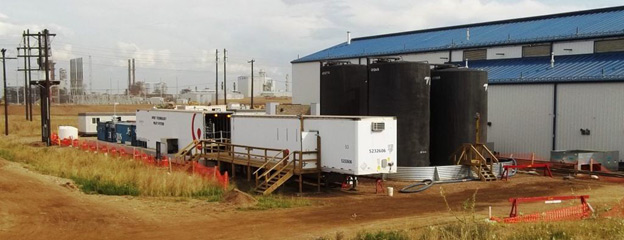Tailings Pond Waters- Mining
RSL Membranes™ have been applied to tailing pond water for mining operations. The success in the application of the RSL Membranes™ has been the separation of colloidal solids (< 0.45 micron) from the tailings pond water.
Tailings contain waste from the extraction processes such as equipment wash water, and refining process water. The latter is often discharged in the form of slurry, which is a mix of fine gangue particles, chemicals and water, to large retention facilities called Tailing Ponds.
Tailings represent a major environmental liability for a mine site, occupying vast surfaces of land and containing metals-contaminated water. The vast volumes of water need to be eventually treated, during operations or after closure.
Increased scrutiny over risks of tailing dam failures is bringing miners to change their approach and to treat their wastewater at the source point rather than merely managing tailings overflow.
Mining corporations such as Anglo American are focused on reducing the loss of water and the use of water. The corporation has an objective for 100% recycle of water and dry stacking of tailings.
One of their main barriers to accomplish these two objectives is the separation of the ultra-fine particles from the mine process water to allow for the dry stacking of the tailings and the reuse of the water.

Many mines are attacking the issue of using chemistry to destabilize the colloids or through evaporation methods. In some cases, the evaporation methods are natural, such as when a large pond surface area is exposed to an intense solar environment. The more common evaporation method is an electric or gas-powered mechanical vapor recompression evaporator. RSL Membranes™ are a proven technology in the manipulation of the electric double layer around colloidal solids to separate the solids from the water without the use of chemistry. RSL Membranes™ use 90% less energy than conventional membranes and 99% less energy than evaporators.
RSL Membranes™ were compared to Veolia’s Ceramem membranes in the first assessment of the RSL Membranes™ technology. The assessment was based on the treatment of tailings pond water where the water could be further treated with reverse osmosis membranes. For RO membranes to be effective, the feed water quality has to have nil suspended solids and turbidities less than 0.4 NTU. Both technologies were evaluated for their capability to remove the colloidal particles from the tailings pond recycle water. The recycle water in most tailings pond is the top layer. The top layer however, has the solids that are the most stabilized and difficult to separate.

RSL Membranes™ outperformed the Veolia Ceramic UF membranes. Flux rates were 10 times the ceramic membranes and produced similar quality water (SDI < 3 and typically < 1). In the above photo, the white trailers contained the ceramic membranes and the small blue trailer to the left contained the RSL Membranes™. As you can see the footprint impact was significant. The systems had the same flow rate and were operated for a year side by side with full time operation over a four-month period. The Ceramic membranes had fouling issues and were limited to the amount of TSS (< 100ppm) in the feed water. RSL Membranes™ could operate over a large range of TSS levels.
The system was evaluated by a well-respected third-party operator called Epcor Water. The photo to the left shows the Epcor operators assembling a RSL Membrane™ bundle of 9 mm diameter sintered stainless steel tubes.



